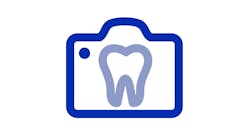Google AdWords (now known in its broader context as Google Ads) has dominated the online marketing landscape since its premiere in 2000. It seems that every year, Google’s digital marketing products eat up a little bit more of the organic results page, almost forcing the consumer to consider, and act on, the advertisement.
With a stunning $134.81 billion in ad revenue in 2019 alone, it’s easy to see why Google is prioritizing their ads, and they aren’t alone. Facebook generated $69.7 billion, and its subsidiary Instagram raked in $20 billion in ad revenue for the same year.
Online advertising isn’t going anywhere. In fact, as it gets harder and harder to rank organically, Google Ads will become an increasingly important part of your digital marketing strategy. And that means you need to be on top of your dental internet marketing game. Let’s explore the five biggest mistakes we see in digital marketing campaigns in the dental industry.
1. Directing ads to your website instead of a landing page
If a patient is searching for an implant dentist, it only seems logical to send them to the implant page on your website, right? Wrong. Landing pages increase your conversion and lower your cost per acquisition of each new patient. Here’s why.
Landing pages are, by design, about just one thing—whatever it is you are advertising. So if a prospective patient searches for “implant dentist near me” and clicks on your ad, they will see a page that is rich with content exclusive to dental implants. It will use images, videos, and engaging text that address their fears and desires, their questions and objections, all without even talking to anyone in your practice. Google rewards that approach by improving your quality score, which in turn, lowers your cost per click and your cost to acquire a new patient.
A good landing page is designed to stop the searcher from going any further. Decision made, the individual should call your office, or better yet, schedule an appointment online. If you’re currently directing your ads to your website, your visitor will likely get distracted and start exploring your site. Most websites are designed to inform, not to promote and convert.
2. Neglecting to remarket
Not everyone who clicks on your digital ad is going to schedule an appointment. Conversion rates vary widely depending on the type of dentistry you’re marketing. While we commonly see new-patient conversion rates of over 20% for general dentistry Google ads, specialty services such as cosmetic dentistry, dental implants, and sleep apnea convert at a much slower pace, resulting in a lower overall conversion rate. Patients seeking specialty services do more research and ask more questions before making a commitment. This is where remarketing can be extremely helpful.
It would be ideal for Google to allow dentists to remarket, but due to HIPAA laws, they do not. Facebook is the next best option. The simple step of adding a Facebook remarketing pixel to your landing page allows your brand and a display ad for your product to follow the searcher, appearing in their Facebook feed again and again. Remarketing, by design, is about keeping your solution top of mind so that when the searcher is ready to buy, you will be their obvious choice.
The best part? You don’t pay a dime for those ads that follow your audience until they take action, clicking on your ad to return to your landing page (or any other destination page you might use to convert patients). At the very least, it’s ridiculously affordable brand awareness. This strategy isn’t limited to pay-per-click campaigns; in fact, it can and should be used for website visitors as well.
3. Not using tracking numbers
Tracking numbers (unique phone numbers that redirect to your office number) should be used in all aspects of your digital marketing. A few years ago, there was a strong argument against using them, because Google could potentially impact your search engine optimization (SEO) by noting that a tracking number did not match the published number for your office. Google has gotten wise to the industry demand for reliable digital marketing return on investment (ROI) data, and now can differentiate the two numbers without consequence to your SEO.
Why should you care about tracking numbers? Well, odds are good you’re not the one in the office answering the phone. When you ask the front desk, “How many calls have we gotten from that dental implant campaign on Google Ads?” you’ll inevitably get a guesstimate. That number will also be influenced by how successful the front desk was at converting those leads into appointments. If your front desk staff has not had call conversion training, they may say the campaign is producing calls from shoppers, or that the callers are unqualified. In turn, you really have no accurate read on your results.
When you’re paying good money for pay-per-click marketing, you should want completely transparent results. Tracking numbers will tell you how many calls each campaign received, plus you’ll be able to listen to the calls to make sure you’re reaching the right target. Add in ROI tracking software that integrates with your practice management system, and you’ll know your digital marketing ROI to the penny.
4. Not speeding to the lead
If a lead completes a form on your landing page, your office has 15 minutes—at most—to call that lead back and get them scheduled. Any longer and the lead will be off to their next dental landing page. If your team is not able to check and respond to email almost immediately, you’re going to lose the lead and waste your money.
Now for the obvious and yet often neglected advice: make sure that your team is aware you have started a digital marketing campaign, and be sure to tell them about any offers that may be part of your efforts. Let them know if leads will be able to submit a form to an email address, and confirm the team will have access to that email address. If your email is tied to the form and you check email at the end of the day, wave goodbye to that lead. You may wish to set up forms so that you are copied on any form submissions to hold the team accountable for their follow-up efforts.
The ultimate solution is to allow your leads to schedule on their own. On average, it takes a patient eight minutes to schedule an appointment by phone, not to mention any ring time or time on hold. Given the option to quickly choose a time that is convenient via an online app, prospective patients will overwhelmingly choose the digital option.
5. Not highlighting your brand and your culture
Make no mistake, your brand is still the deciding factor between a call to your office and a click back to Google to find another option. Your landing page should help prospective patients see who you are and why your office is different from the dozen other options available on a Google search page.
Use language that shows patients you don’t judge (no matter how long it’s been since they’ve been to a dentist), and tap right into those pain points by answering the difficult questions up front. This tells prospective patients that you are an open and honest communicator.
Location is also important to patients, so include either a map pinpointing your office or feature a photo of your facility near the top of the landing page. Be sure to include a photo of you and your team, preferably in a relaxed and welcoming pose. Videos are a great way to show off your office and your team as well. Most importantly, include testimonials from patients that highlight what makes you special.
If digital advertising isn’t yet part of your new-patient marketing, you should strongly consider it in your 2021 marketing plan. However, if you’re already active on Google Ads and Facebook Ads, do a little double-check of your campaigns to make sure you’re not making any of these mistakes. Your dental marketing company should be happy to show you how they’ve addressed every one of these points. If you’re not happy with what you’re seeing, at least know the problems are relatively easy to fix, and the effort will result in a lot more calls coming your way.
XAÑA WINANS, BA, is the CEO of Golden Proportions Marketing, a full-service dental marketing company. Married to a dentist, she has been marketing dental practices for 20 years and provides strategic planning and internal, external, and digital marketing to dentists across North America. You may contact her at [email protected] or (866) 590-4476 to learn about dental marketing strategies, or visit goldenproportions.com.







